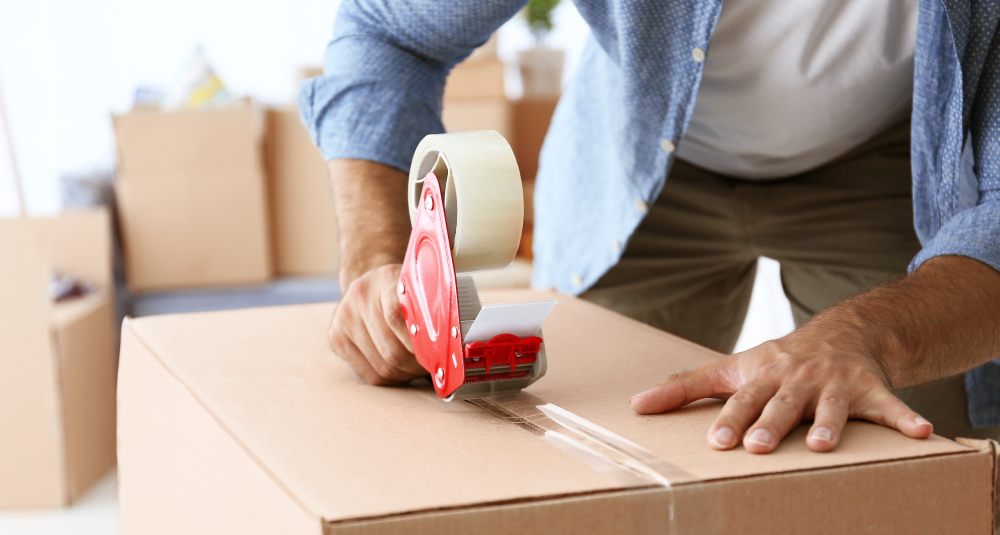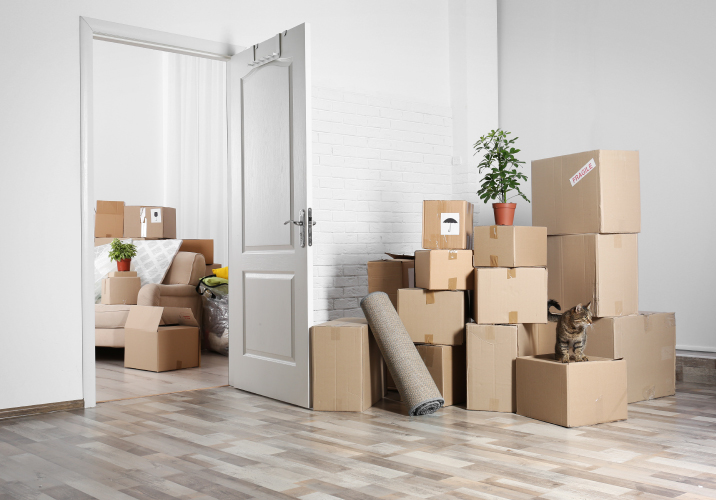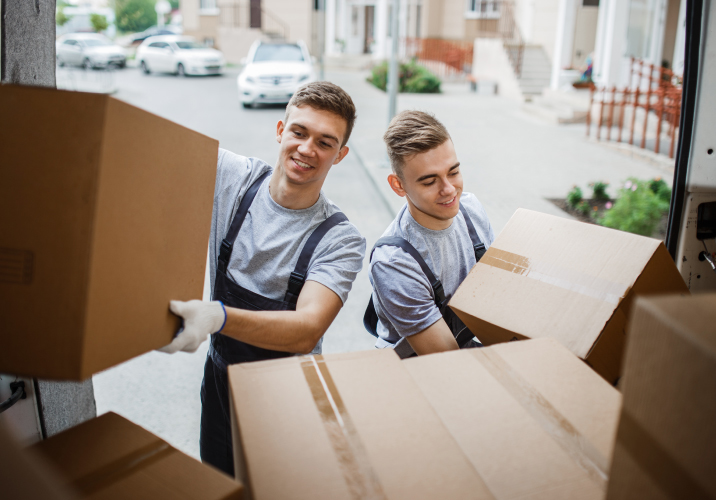
Find a local removalist
- Inspiration /
- Lifestyle /
- Real estate & moving /
- Moving interstate...
Moving interstate checklist
Your guide to moving interstate in Australia
Moving states within Australia is a big job, and while there may be no visa requirements there’s still plenty of planning and effort involved. Here, we’ve pulled together a moving interstate checklist to help you carry out the big move successfully and with minimal stress. Read on for our step-by-step guide, as well as what to look out for when selecting your removalist provider.
Packing your old place
Step one, write your own customised checklist to help you keep track of the entire moving process. If you’re renting, be sure to make arrangements to have the property properly cleaned by a professional cleaner. If you own the home you’re leaving – ensure you’ve got it looking it’s best for potential buyers or renters with the necessary renovations or fixes.
Packing supplies you will need:
- Packing tape
- Packing boxes
- Plastic wrap
- Bubble wrap for more delicate items
- String
- Labels to properly mark all items
- Permanent markers
Six weeks before the move
Winnie from Yong Song Transport recommends that you start the planning process early.
“Finding a removalist at least one month in advance will get you a good rate and a flexible moving date. Avoid purchasing new items after the inspection otherwise they won’t be able to fit in the truck. Also, when it’s a big move you expect certain items may not arrive at the same time – make sure you prioritise those you wish to arrive first.”
“People tend to get rid of many things when they move, so be sure to check the latest rubbish removal date with your local council. Otherwise, when it’s too close to the moving date, you may need to contact a waste management company to get it solved.”

Here are some other general checks to do in advance to keep your move running smoothly:
- Sort through your belongings
You can divide them into three different sections. The first section should include everything you intend to take with you; another section includes everything you don’t need and can donate to charity or sell online and the last section includes everything that’s too damaged to take or donate.
- Have a plan for what you may get rid of
There may be many items you can sell online on places like Gumtree or Facebook Marketplace to help fund the big move. Deposit clothing and other items you intend to donate at your local shelter or charity.
- Collect all of your suitcases, luggage and empty containers
They can be used for transporting items safely. This can help you save money on packing materials and keep your items secure as well. Suitcases and containers are usually more secure and resistant to damage than cardboard moving boxes so you can store the fragile items in them.
Three weeks before the move
Three weeks can pass by in the blink of an eye, so it’s time to start collecting packing materials and prepare for the move. Johnny from Crusader Removals recommends getting yourself organised early.
“Pack the non-essentials first and leave the cutlery, kitchenware, and beds to the last minute. You will still need to use them in the final couple of weeks.
The more time you give yourself, the better. Every household is different and it’s difficult to set a timeframe but start to gradually dismantle your furniture so not everything is left to last minute.”
His other handy hint might prove a lifesaver at the other end: “Keep all the bolts and screws together. I would put them in a plastic bag and stick it to the frame.”
Here’s else you should be doing at the three-week mark:
- Find packing materials
Most moving companies are willing to provide them at a minimal cost. You also have the option to purchase them from your local store. Rahat from Deol Removals recommends using the same size boxes across the board: “If all the boxes are the same size, it saves more spaces in the truck hence the truck can load more items.”
- Change your address
Notify all the important organisations, such as Australia Post and your bank, to ensure all your mail will be delivered to your new address. Check out our change of address checklist to help get you started.
- Pack the paperwork
These may include medical records, financial records, official documents and identifications, school records, etc. Be sure to carefully label this box so that you don’t lose track of your most important paperwork – these are some of the hardest things to replace!
- Purchase only the essentials
Make a trip to the grocery store and purchase enough essentials to last you three weeks, avoiding any excess or bulk buys.
- Schedule some time to say goodbye
The closer you get to the move, the short on time you’ll find yourself. Schedule in time now to say farewell to your nearby friends and family – and don’t forget to pass on your new contact details.

One week before the move
This is the most frantic period of your move so it’s important to keep yourself organised and maintain a proper schedule. Rahat from Deol Removals recommends the steps mentioned below:
“Remember to communicate any special tool requirements with your removalist. In general, removalists have a toolbox in their truck but some items may require a bigger screwdriver and some other tools.”
Some other checklist items include:
- Empty your refrigerator
Clear all kitchen cabinets and shelves of excess food. Only retain the food items you will need for the last few days before the move.
- Pack an overnight bag
It will include items you need immediately after you arrive at your new home. You will need your toothbrushes, toothpaste, bath items, toilet paper, medication, and other such personal items. Also, pack a few days’ worth of clothing.
- Finish packing other items and label your boxes
Make it a point to clearly label all your boxes – especially those that contain fragile and heavy items to help the movers. They’ll take the appropriate precautions for heavier boxes as well as ones containing fragile items – and know where to put which box at the other end.
- Check-in with your removalist
Now would be a good time to confirm your move date, and any other special tool requirements you might have – outside what a removalist would keep in their standard toolbox.
- Hire a professional cleaner
Make your home ready for the new homeowners or tenants by getting an end of lease clean by a professional.
Moving day
By this time all of your items should be packed and you should be ready to move interstate. If you’ve chosen the back-loading option, you need to be ready for the pickup because the truck can arrive at any time. Here’s what else should be on your to-do list on move day:
- Check the pickup time.
Call the interstate removalists for back-loading to get an idea about the pickup time. (More on back-loading further down the page!)
- Don’t work on an empty stomach
Remember to have a healthy breakfast that will give you lasting energy throughout the day.
- Supervise the movers
When they load the items into the moving truck you can guide them through different boxes and items. Ensure they place the heavier boxes at the bottom and boxes containing fragile items at the top.
- Keep all of your important documents and valuables with you
This means there’s less chance of them going missing, and will give you peace of mind.
- Final walk-through
Once all items are removed do a final walk-through of the property to ensure you haven’t left anything behind – and say a quick goodbye to your old home!

Choosing a removalist
Before you move, be sure to discuss your needs and options with the moving company to determine what plan will best suit you. It’s also a good idea to get quotes from multiple movers and compare them, keeping an eye out for things like hidden costs, insurance problems, and lack of licensing.
Here are some of the options you’ll need to consider for long-distance moves:
- With or without packing
Most moving companies offer packing and loading services along with moving services. Packing is optional, so you can choose to skip that and handle the packing yourself to save money. Some movers also supply free packing material like boxes, ties and tapes so you won’t have to purchase the material.
- Back-loading
Back-loading is a great option for people who want to save some money on the move. Your possessions will be transported to the destination in a shared truck with a number of other consignments. This is a popular and affordable alternative to hiring a full truck – especially when you’re looking at a lengthy inter-state drive.
The downside is that movers can’t give you an accurate pick-up and drop-off time. They’ll give you a fixed date but not a fixed time, but that’s an acceptable trade-off for the cost benefits of this option. Your possessions will still be delivered safely and to the destination.
- Full long-distance move
If you want to save some time and effort, you can hire a full truck. This is the most expensive option available because it includes everything from packing, packing material, loading, transport, unloading and unpacking. You won’t have to lift a finger during the move, as the moving company will handle every aspect of the process.
- Furniture or single item removal
Moving companies that offer back-loading also offer single furniture or item removal. For example, you can hire them to just transport your piano from one state to another. Some moving companies also have smaller vehicles like vans that you can hire to transport single large items. While this option is still more expensive compared to back-loading, it gives you greater control over pick-up and delivery times and minimises the risk of damage to your possessions.
If you’re looking to relocate, you can connect with removalists on Oneflare today.
Related posts
How much will your job cost?
The Oneflare Cost Guide Centre is your one-stop shop to help you set your budget; from smaller tasks to larger projects.



